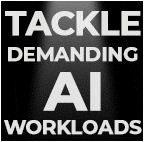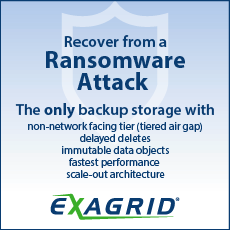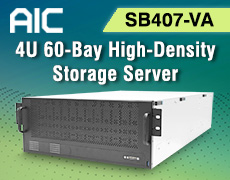Opinion on the Solidigm Paper Titled “The Economics of Exabyte Storage”
Really a strange method and approach
By Philippe Nicolas | October 7, 2025 at 2:02 pmWe discovered recently this Solidigm paper and wished to spend some time to study it. First the title “The Economics of Exabyte Storage” is intriguing.

With TCO but also other economics oriented papers, it’s important to check who is speaking and presenting the paper. In other words, where does the author speak from? Here the paper is written and published by Solidigm, so they wouldn’t have presented ever papers in favor of HDDs approach. This obvious and common sense. So is this paper worth reading?
Now the paper compares open source software Ceph coupled with HDDs vs. Vast Data plus SSDs. Is it fair? Of course not, as an engineer, I have difficulties to understand comparisons with multiple parameters as it introduces real difficulties to figuring out these parameters impacts. So to compare the effect of SSDs over HDDs, we have to fix the software, here Ceph as Vast doesn’t work with HDDs. Everything has to be the same to measure the effect of one parameter.
The other hypothesis is the famous 10 years criteria as Vast Data claims QLC can last 10 years under their management. But as Vast Data was founded in 2016 with product released later, this 10 years is a projection. This is clearly in favor of Vast Data, what about changing this to 4 or 5 years and then introduce a second SSD buy, for sure the result is not the same.
The other remark is on the size of the config, is it really representative of an average configuration deployed with Vast Data and Ceph?
The paper insists a lot of Vast’s DASE architecture but as it doesn’t support HDD, this is useless because incomparable.
Selecting 122TB QLC SSD from Solidigm has some advantages in the demonstration, even more with 245TB ones, and it can be considered also with other market SSDs. The good thing would have been, for instance, to compare different SSDs with Vast Data, as they support only that, or the same study with Ceph and compare SSDs and HDDs as the open source software works with both storage devices.
For metadata, the paper refers to AWS FSx for ONTAP, another different animal, why that? And a reference to vSAN ESA, a block storage software solution for VM environments. Wow!!
For data protection, the paper uses as a reference Vast Data erasure coding model, why? Same thing for data reduction.
Also, the paper doesn’t include support, networking or infrastructure costs, it is a bit bizarre for a scale-out solution with very active network utilization. Ceph is open source and Vast Data is a commercial software, this is a real miss.
The paper is finally a promotion paper when you read “Solidigm and Vast Data have collaborated…” just above the introduction. Ceph was designed during HDD times, evolved a lot, and Vast Data with Flash, SSD, NVMe and container in mind, several years later, really 2 different animals.
When we read this paper, we realized that it would be good to give an opinion on this. And we have a strange feeling…














 Subscribe to our free daily newsletter
Subscribe to our free daily newsletter

